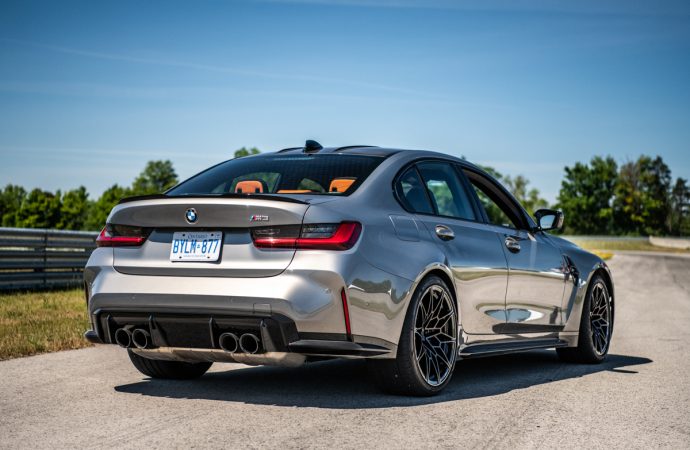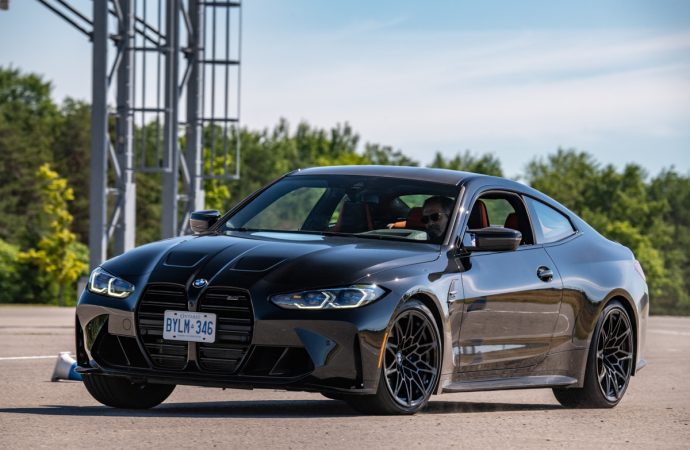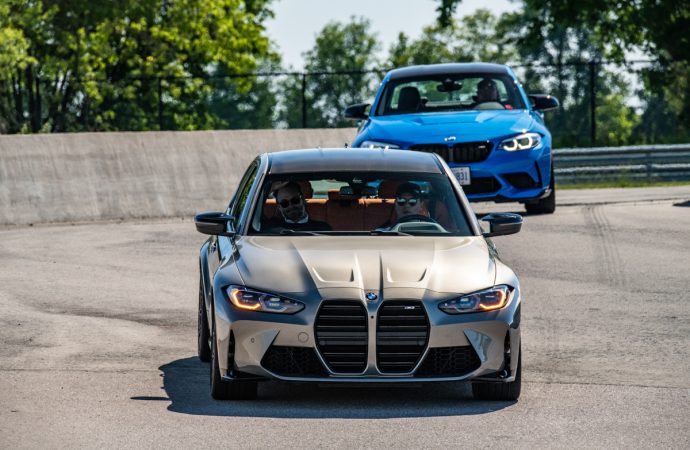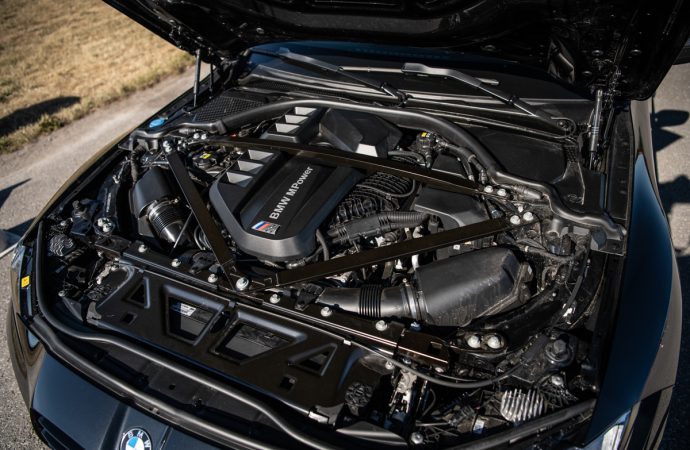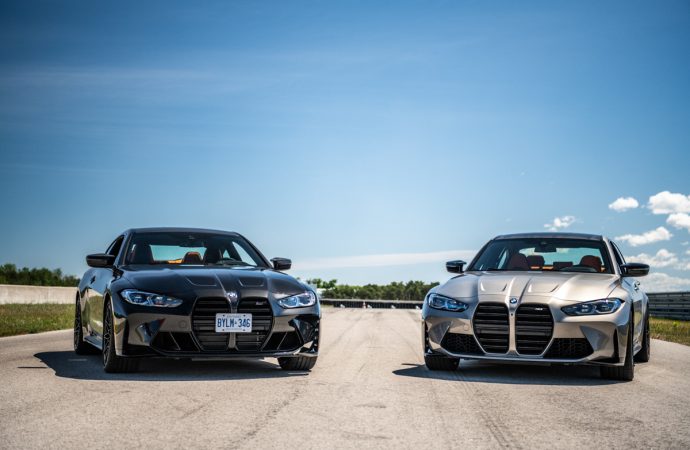BOWMANVILLE, ONTARIO – The sixth generation BMW M3 sedan and M4 coupe have made headlines when unveiled in September 2020 with most of the attention placed around the designers’ work rather than the engineer’s. Fact is, the changes made to the all-new 2021 BMW M3 and M4 are much more than skin deep and to properly demonstrate their prowess, BMW Canada invited us to the Canadian Tire Motorsports Park (CTMP) to put the performance twins through its paces.
Upon arriving at CTMP, we were presented with a 2021 BMW M3 sedan with a six-speed manual transmission and the more powerful 2021 BMW M4 Competition with the eight-speed M Steptronic automatic transmission. We will leave the judgement of their styling to the eyes of the beholder but we must say that the M3/M4 twins looked right at home on the race track with their dramatically flared bodies and their ultra-athletic stance.
The standard M3 and M4 are equipped with the new “S58” powerplant that delivers 473-horsepower at 6,250 RPM and 406 lb-ft. of torque between 2,650 and 6,130 RPM. Buyers are presented with a choice of manual or automatic, an absolute rarity in today’s performance world, and we expect the row-your-own M3/M4 to be a popular choice among driving enthusiasts. A fun fact is that the standard 3- and 4-series have done away with the third pedal, making the M3 and M4 the only way you can opt in for a manual and we applaud this decision by BMW to buck the trend.
For those who are looking for the ultimate driving performance, the M3 Competition and M4 Competition steps up the S58 engine with its own performance tune to up its output to 503 horsepower at 6,250 RPM and 479 lb-ft. of torque at 2,750 to 5,500 RPM. To go with the increased performance, BMW has opted to only offer an eight-speed M Steptronic automatic transmission, a reasonable decision to best utilize the Competition models’ abilities especially on track.
The front grille design draws plenty of criticism but these oversized front intakes are functional, especially on track. The upper part of the grille opens to allow more air flow into the low-temperature and high-temperature radiators while the lower area is used to support the oil cooler. On the Competition models, there is an additional transmission oil cooler to endure the track duty its owners plan to throw at them. Both of our samples have power routed to the rear wheels only but later this year we will see M xDrive all-wheel drive available on Competition models to push performance over the top.
Out on the race track, we quickly forgot about the looks and shifted our focus to finding the limit of these high-performance machines. We are able to seamlessly get up to track speed thanks to the quick-spinning BMW TwinPower turbochargers and both transmissions have no problem keeping up with the engine. We knew the M Steptronic transmission’s ability to get through gears in microseconds but we were pleasantly surprised by how easy the manual transmission is to use on track. Clutch feel is light and the engagement point is easy to find. If you decide to turn off its Gear Shift Assistant downshift rev-matching feature, heel-and-toe downshifting is easy with excellent pedal placement.
The M3 and M4 Competition feel neutral in the corners with slight tendency to oversteer if not careful with the throttle at corner exits. The M3 feels a bit easier to control in the corners thanks to better front-to-rear weight distribution, due to the lighter weight manual transmission and a less violent power delivery. The M4 Competition is the better choice if lap time is of utmost importance and there is a skilled driver at the helm.
Both testers wore Pirelli P-Zero performance tires that stuck the cars to the track like glue and delivered great road feel through the M-specific electric power steering racks. The steering offers good progressive weight and is incredibly accurate, and the new standard M Compound brakes are confidence-inspiring with no sign of fading despite the tough work we put them through all day.
Track performance is nothing without a comfortable seating position and good visibility, and BMW M models have always delivered on this end to keep their drivers safe and focused. The standard M sport seats offer good lateral support but the optional M Carbon bucket seats equipped on the M4 Competition take things to another level. There is no room for slippage in these optional M Carbon bucket seats, and they are accommodative for helmet use and multi-point seat belts with a lower seating position than the standard M sport seats, making them a must-buy if track driving is the priority.
At the end of the day, the 2021 BMW M3 and M4 models proved to be the perfect track companions. The standard M3 and M4 are ideal for those who consider themselves less than hardcore, and the Competition models are perfect for, well, competition use, especially for experienced drivers. You might not like the styling but trust us — you will not care when behind the wheel. These two machines are more than worth their while.
Photos Courtesy of Lucas Scarfone / BMW Canada

